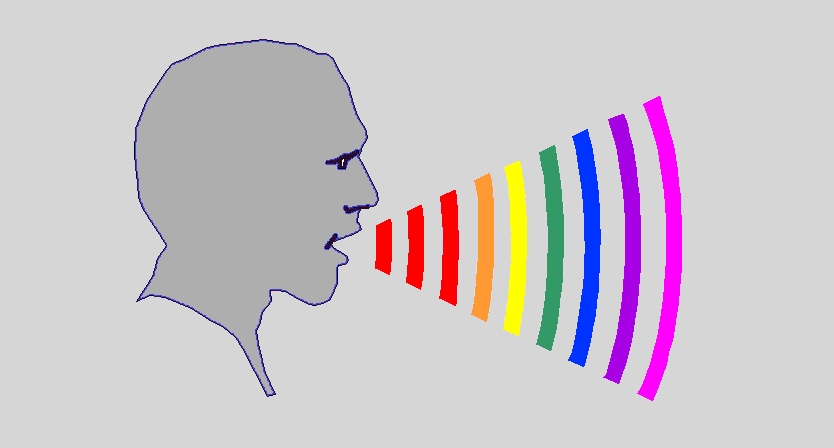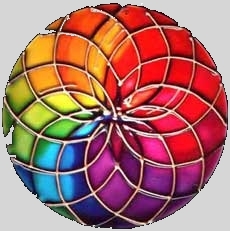Date: Tue, 28 Sep 2004 15:31:43 -0400
Sent To: GrassRootsReiki@yahoogroups.com
Music/sound By: Reverend R Clark <clark@acceleration.net>
Sound: Page: One, TwoQ: What CDs would you recommend for healing work? What do you personally love the most?
- Best is live acoustic music (un-amplified) which is why I play instruments at Reiki share and for individuals.
That said the recordings I find most helpful are:
- YaYa Diallo - Dombaa Folee (The Relaxation Company)
- Steven Halpern - Spectrum Suite (especially or most anything else he's done) (Inner Peace Music)
- Mike Rowland Fairy Ring (especially or most anything else he's done)
- Aeoliah - Angels of Healing - Music for Reiki, Massage & Healing, Volumes 1 & 3 (Helios Music)
- The test for these selections is clear, immediately uplifting and I've played them on repeat for days at a time and not tired of them.
- Additionally, the "Brainwave" music CD's from Jeffrey Thompson, M.D. (The Relaxation Company), HemiSync and other similar offerings are uniformly useful also in my experience.
“The relation of rhythm to pleasure is most clearly seen in the... voluntary movements of the body. Any motor activity that is performed rhythmically is pleasurable. If it is performed mechanically, w/o a feeling of rhythm, it has a painful quality. The best example is walking. When one walks rhythmically, the walking is enjoyable. When one walks to get to a destination as quickly as possible, the physical activity becomes a chore. Even such tedious jobs as raking leaves or sweeping a floor can be pleasurable activities when the movements are rhythmical.
...The person who lives pleasurably moves rhythmically, effortlessly, and gracefully.
Whether a person feels pleasure because his movements are rhythmical or whether his movements are rhythmical because he is in a state of pleasure is immaterial. Pleasure is rhythm and rhythm is pleasure....
Dancing is, of course the classic example of pleasure in rhythmic movement. The music sets the beat going in our bodies, and it is then translated into the rhythmic pattern of the dance step. It is painful to find oneself out of step with the music, and it is disturbing to find that the music is out of harmony with one's internal beat. Marching music does for walking what dance music does for dancing. The music by accentuating the beat and focusing our attention upon the rhythm increases our pleasure in moving.
It is important to realize that music does not create rhythm. The music is in fact, an expression of the rhythm in the composer's body, which finds an echo in the body of the listener. It would be correct to say that music evokes the rhythms that are within us.
All bodily activity is inherently rhythmical; the voluntary movements are no exception, although they are under conscious control. But because they are under the control of the ego, we can move un-rhythmically if the ego ignores the body's feeling for pleasure and imposes an overriding goal.
Voluntary movements, in contrast to those that involuntary require a high degree of coordination before they become rhythmical.
...The machine gains its efficiency by being limited to a single rhythmic pattern... In contrast, man has an almost unlimited number of rhythmic patterns to correspond to his different moods and desires. He is capable of weaving complex rhythmic patterns to increase his pleasure and joy. He is in other words, biologically structured for pleasure not efficiency. Man is a creative being not a productive one. Yet out of his pleasures have come great achievements. Unfortunately, out of his achievements he has found little joy, because productivity has become more important than pleasure.
- Alexander Lowen, M.D. in Pleasure: A Creative Approach to Life ISBN 0-9743737-2-9“For mankind, speech with a capital "S" is especially meaningful and committing, more than the content communicated. The outcry of the newborn and the sound of the bells are fraught with mystery more than the baby's woeful face or the venerable tower.”
- Paul Goodman (1911-1972) American Author, Poet, Critic
Sound: Page: One, Two
Related:
Drumming 'n Drugs
Drumming As A Form of Prayer by Jim PathFinder Ewing (Nvnehi Awatisgi)
Drumming Peace One Oh One
Drum Reiki
Drums: How they beat stress by By Ann Trieger Kurland
Finding Healing Music in the Heart by Corey Kilgannon
Healing, Drumming & Praying by Jim PathFinder Ewing (Nvnehi Awatisgi)
Melodic Instruments at Drum Circles
Sound
Prayer
Shamanism: Drumming and/or Drugs
Voices at Drumcircles: Testimony and TheoriesLiterary and Graphical Freeware: Not for Commercial Use.
Copyright (c) 1998-2011 R. Clark - clark@acceleration.net .
Permission is granted to make and distribute verbatim copies of this publication (www.acceleration.net/clark and all children) provided the copyright notice and this permission notice are preserved on all copies.


